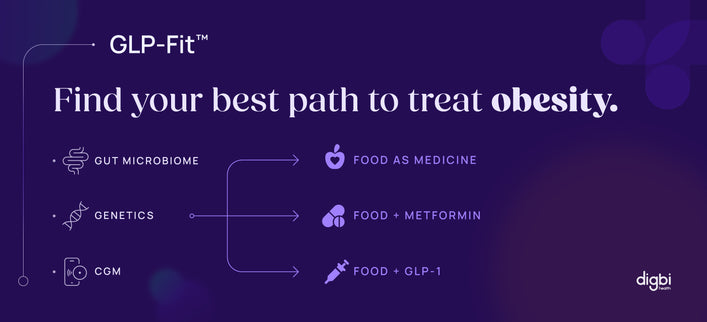In America, roughly 33% of adults and 25% of children are obese. Society assumes that individuals who struggle with obesity are lazy. The majority believe that overweight people simply eat too much. Sadly, this false paradigm exacerbates the problem. In reality, the issue of obesity is not that simple.
To understand the weight epidemic in the United States, educate yourself about what’s really going on inside the body of people who struggle with weight gain. Obesity is a complex problem that you can begin to understand here. Empower yourself with the truth.
First, is Obesity a Disease?
If this condition isn’t caused by laziness and simple overeating, what is it? Obesity is a multifaceted disease, often linked to numerous other adverse health conditions.
- Osteoarthritis
- Sleep apnea
- Gynecological and sexual problems
- Digestive problems
- Cancer
- Type 2 diabetes
- Heart disease
- Stroke
Furthermore, obesity is one of the few maladies that can have a negative impact on social health and interpersonal relationships.
Obesity symptoms include being overweight, binge eating, potbelly, fatigue, and snoring. However, the disease is diagnosed by calculating a patient’s body mass index (BMI). It is determined when a person has a higher BMI than what is considered healthy.
What Are the 3 Classes of Obesity?
A person with a BMI of above 30 is considered obese. And, there are three classes of obesity.
- Class 1 Obesity: BMI of 30 to 34.9
- Class 2 Obesity: BMI of 35 to 39.9
- Class 3 Obesity: BMI of 40 or higher
The ideal BMI for a healthy adult falls in a range between 18.5 and less than 29.9. Anything above this may be linked to other serious physical illnesses.
How to Find Out if You Are Obese
Obesity can be quickly self-diagnosed. Enter your height and weight in this BMI calculator to discover your BMI and find out where you fall into the spectrum.
Or, find your BMI using the following chart.
|
Height |
Underweight |
Normal |
Overweight |
Class 1 Obesity |
Class 2 Obesity |
Class 3 Obesity |
|
4 ft 11 in |
< 91 lbs |
91 - 118 lbs |
119 - 142 lbs |
143 - 166 lbs |
167 - 190 lbs |
> 191 lbs |
|
5 ft |
< 94 lbs |
94 - 123 lbs |
124 - 147 lbs |
148 - 172 lbs |
173 - 197 lbs |
> 198 lbs |
|
5 ft 1 in |
< 97 lbs |
97 - 127 lbs |
128 - 152 lbs |
153 - 178 lbs |
179 - 203 lbs |
> 204 lbs |
|
5 ft 2 in |
< 104 lbs |
104 - 135 lbs |
136 - 157 lbs |
158 - 184 lbs |
185 - 210 lbs |
> 211 lbs |
|
5 ft 3 in |
< 107 lbs |
107 - 140 lbs |
141 - 163 lbs |
164 - 190 lbs |
191 - 217 lbs |
> 218 lbs |
|
5 ft 4 in |
< 110 lbs |
110 - 144 lbs |
145 - 168 lbs |
169 - 196 lbs |
197 - 224 lbs |
> 225 lbs |
|
5 ft 5 in |
< 114 lbs |
114 - 149 lbs |
150 - 179 lbs |
180 - 203 lbs |
204 - 231 lbs |
> 232 lbs |
|
5 ft 6 in |
< 118 lbs |
118 - 154 lbs |
155 - 185 lbs |
186 - 209 lbs |
210 - 239 lbs |
> 240 lbs |
|
5 ft 7 in |
< 121 lbs |
121 - 158 lbs |
159 - 190 lbs |
191 - 215 lbs |
216 - 246 lbs |
> 247 lbs |
|
5 ft 8 in |
< 125 lbs |
125 - 163 lbs |
164 - 196 lbs |
197 - 222 lbs |
223 - 254 lbs |
> 255 lbs |
|
5 ft 9 in |
< 128 lbs |
128 - 168 lbs |
169 - 202 lbs |
203 - 229 lbs |
230 - 261 lbs |
> 262 lbs |
|
5 ft 10 in |
< 132 lbs |
132 - 173 lbs |
174 - 208 lbs |
209 - 235 lbs |
236 - 269 lbs |
> 270 lbs |
|
5 ft 11 in |
< 136 lbs |
136 - 178 lbs |
179 - 214 lbs |
215 - 242 lbs |
243 - 277 lbs |
> 278 lbs |
|
6 ft |
< 140 lbs |
140 - 183 lbs |
184 - 220 lbs |
221 - 249 lbs |
250 - 285 lbs |
> 286 lbs |
|
6 ft 1 in |
< 144 lbs |
144 - 188 lbs |
189 - 226 lbs |
227 - 257 lbs |
258 - 293 lbs |
> 294 lbs |
|
6 ft 2 in |
< 148 lbs |
148 - 193 lbs |
194 - 232 lbs |
233 - 264 lbs |
265 - 301 lbs |
> 302 lbs |
|
6 ft 3 in |
< 152 lbs |
152 - 199 lbs |
200 - 239 lbs |
240 - 271 lbs |
272 - 310 lbs |
> 311 lbs |
|
6 ft 4 in |
< 156 lbs |
156 - 204 lbs |
205 - 245 lbs |
246 - 278 lbs |
279 - 318 lbs |
> 319 lbs |
|
6 ft 5 in |
< 160 lbs |
160 - 209 lbs |
210 - 251 lbs |
252 - 286 lbs |
287 - 327 lbs |
> 328 lbs |
|
6 ft 6 in |
< 164 lbs |
164 - 214 lbs |
215 - 257 lbs |
258 - 293 lbs |
294 - 335 lbs |
> 336 lbs |
|
6 ft 7 in |
< 168 lbs |
168 - 219 lbs |
220 - 263 lbs |
264 - 300 lbs |
301 - 344 lbs |
> 345 lbs |
Next, What Causes Obesity?
If you struggle with obesity, you have no doubt counted calories, tried fad diets, exercised, and pushed yourself to near starvation in attempts to shed excess pounds. And, while diet and physical activity play a role in your health and weight, there is a reasonable explanation of why your efforts aren’t long term solutions.
Obesity is affected partially by genetics with the gut microbiome as a contributing factor. Lifestyle choices, socioeconomic issues, age, pregnancy, lack of sleep, stress, and previous attempts to lose weight also play a role.
Video by Digbi Health
“You have 30 trillion cells and over 100 trillion gut bacteria that determine your overall health and ability to lose weight."
How Does Obesity Contribute to Diabetes?
While type 2 diabetes is a multifactorial disease, many of the 250 contributing genetic regions associated with predisposition to the condition are shared with those of obesity. Obesity is not the sole cause of the disease that causes insulin resistance in the body, but it is a key risk factor.
To understand type 2 diabetes and obesity, researchers have produced detailed genetic documentation based on molecular structures within DNA and disease-related intermediate phenotypes.
These studies observe several genomic areas related to the following:
- The interplay between β-cell failure
- Insulin sensitivity
- Appetite regulation
- Adipose storage
Researchers see repeatedly that obesity and type 2 diabetes are closely linked.
So, Can Obesity be Cured?
While healthy eating choices and exercise are recommended for obesity, there is no one-size-fits-all cure. The reason a cure can not be defined is that each individual body is different. Consequently, treatment should be recommended on a case-by-case basis because diet and exercise alone cannot cure obesity.
While kale and spinach may be superfoods for some, these nutrient-packed greens can cause kidney stones in others. And, gluten-free products can be unhealthy for one group and simultaneously save the lives of those with celiac disease. So, for lasting results, obesity treatment needs to be personalized.
With a genetic evaluation and gut bacteria analysis, physicians, health coaches, and individuals can create informed and effective healthcare and weight-management plans.
Final Thoughts
Obesity is a life-threatening disease with direct links to other physical and social issues. The cause is complex with multiple, unique factors in every case. So, effective obesity treatment requires a customized strategy.
Digbi Health has operationalized the first Gut Microbiome and DNA-based weight loss program covered by insurance companies. For personalized guidance to help you navigate your unique biology, metabolism, lifestyle, and food preferences, try a 6-month, customized gut biome and DNA-based weight loss program.
Learn more about Digbi:













